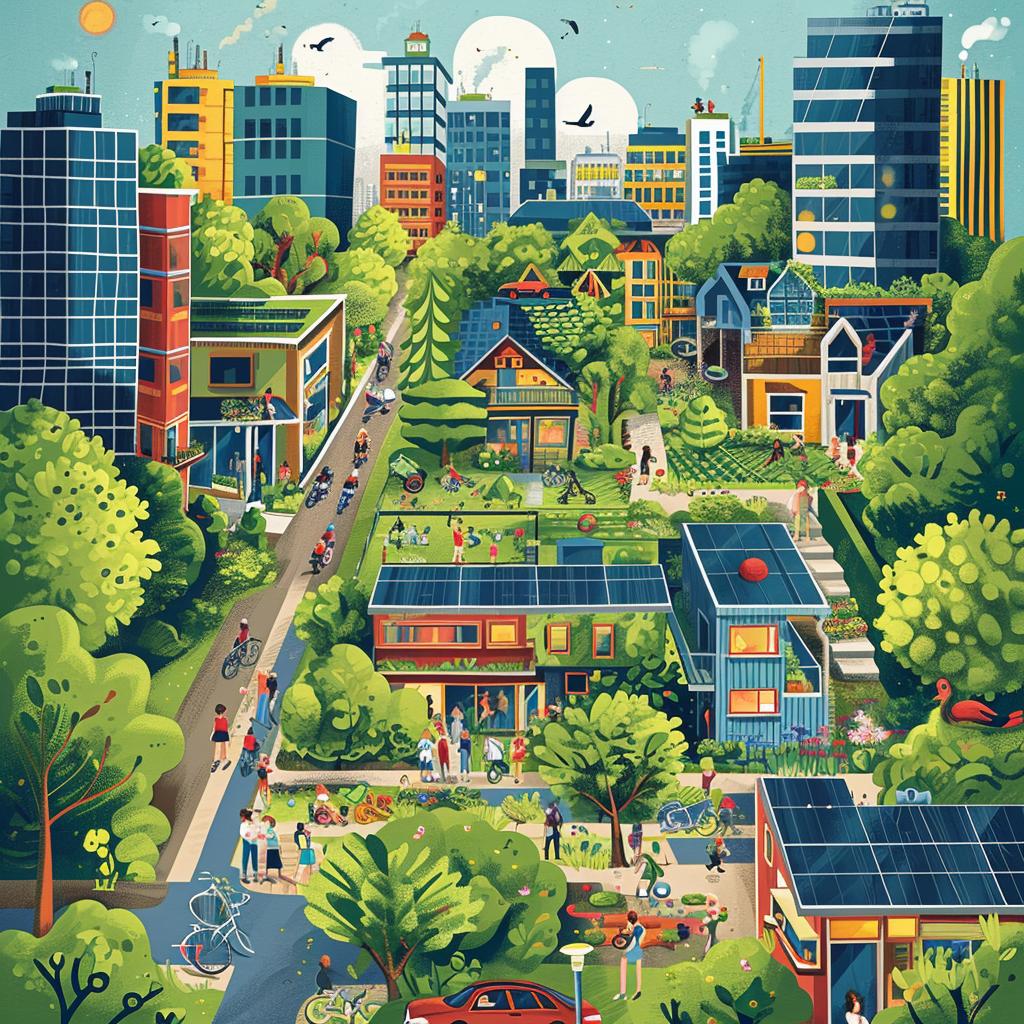Trends in urban development

In the ever-evolving landscape of metropolitan development, certain patterns are shaping the future of cities around the globe. This blog delves into the most recent urban trends, offering insights into what they mean for developers, city planners, and inhabitants alike.
Exploring these movements is essential for understanding how urban areas adapt to challenges such as population growth, environmental sustainability, and technological advancements. Keep reading to discover the forefront trends in city development.
Integration of Green Spaces
One prominent trend reshaping urban layouts is the integration of green spaces into city planning. Parks, vertical gardens, and green rooftops are not just aesthetic enhancements—they're vital for improving air quality, enhancing mental health, and mitigating urban heat island effects.
This movement towards greener cities reflects a growing recognition of the importance of environmental sustainability and public well-being in urban development.
Moreover, these green spaces serve as communal areas, fostering social interaction and community engagement among city dwellers.
Such initiatives are critical in creating liveable and resilient urban ecosystems for future generations.
Smart City Technologies
Technological innovation plays a crucial role in the current evolution of urban environments. The concept of 'smart cities' harnesses the power of advanced technologies such as the Internet of Things (IoT), artificial intelligence (AI), and big data analytics to improve urban infrastructure, services, and quality of life.
From intelligent traffic management systems to energy-efficient buildings, these technologies facilitate more sustainable and efficient urban living.
Furthermore, they enable cities to better respond to the needs and preferences of their inhabitants, creating more inclusive, interactive, and responsive urban landscapes.
Sustainable Transportation Networks
Another significant pattern in urban advancement is the development of sustainable transportation networks. Architecting cities that prioritize walking, cycling, and public transit over car dependency is a key focus.
This shift not only addresses environmental concerns but also promotes healthier lifestyles among urban residents while reducing traffic congestion and pollution.
Implementing bike lanes, pedestrian zones, and efficient public transit systems are part of this transformative approach to urban mobility.
Moreover, the adoption of electric vehicles (EVs) and the expansion of EV charging infrastructure are expected to play a crucial role in the green transportation revolution.
These endeavors underscore the commitment to creating more sustainable and accessible urban environments.
Mixed-Use Developments
Mixed-use developments, which combine residential, commercial, and recreational spaces in a single cohesive unit, are becoming a staple in modern urban planning. This holistic approach to development promotes vibrant, integrated communities where people can live, work, and play.
Such configurations not only maximize land use but also contribute to the economy of urban centers, making cities more dynamic and versatile.
They significantly reduce the need for commuting, further contributing to sustainability and enhancing the quality of urban life.
By fostering a sense of community and convenience, mixed-use developments are redefining urban living.
Urban Resilience and Adaptability
Building urban resilience to withstand and recover from adverse events is a pivotal trend. This encompasses enhancing infrastructures' ability to deal with natural disasters, climate change, and other unforeseen challenges.
Implementing resilient building materials, flexible urban layouts, and emergency preparedness plans are among the strategies cities are adopting to safeguard their future.
Moreover, adaptability in urban planning is crucial for accommodating future changes, whether demographic shifts, technological advancements, or new environmental policies.
This focus on resilience and adaptability ensures that cities remain safe, functional, and thriving, irrespective of the challenges ahead.
Conclusion
The latest trends in urban development reflect a comprehensive approach to creating liveable, sustainable, and resilient cities. By integrating green spaces, leveraging smart technologies, developing sustainable transportation, embracing mixed-use projects, and bolstering urban resilience, cities are evolving to meet the complex demands of the 21st century.
As these trends continue to unfold, they offer a roadmap for future urban development that prioritizes environmental sustainability, technological integration, and community well-being. Embracing these changes is instrumental in building the cities of tomorrow.

Related